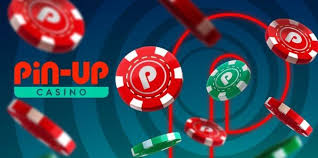Pin-Up Culture Introduction: Pin-up culture has been the object of fascination for many, ever since its sprouting from the unlikely fusion of art, glamour, and nostalgia. Coming into prominence during the early 20th century, pin-up art depicts an illustrated or photographed vision of attractive women that was once used for advertising and popular media. Be it saucy cartoon damsels plastered on military aircraft during World War II or plebeian soft-core pornography, these images became cultural icons, transcending their original context to influence fashion, art, and culture. Let's enter the dynamic world of pin-up art!

What is Pin-Up Art?
A Brief History
Pin-up art first originated in the early 1900s and reached its peak in the 1940s and 1950s. During World War II, pictures of pin-up girls were carried by soldiers for motivational and comforting purposes. Artists such as Alberto Vargas and Gil Elvgren popularized the style and left a mark behind with their glamourizing portrayals of women in the face of the genre.
Legendary Pin Up Artists
Among the most renowned pin-up artists are Gil Elvgren, an artist known for creating pin-up women that were more engaging and playful, whereas Alberto Vargas, on the other hand, created sensual yet classy women and thus enjoyed a tremendous following. Their works remain in huge demand and continue to inspire pin-up artists even today.
Characteristics of Pin-Up Art
Style and Aesthetic
Pin-up art is done in bright colors and playful poses, always showing great emphasis on femininity. The subjects are depicted with a confident and charming posture wearing fashionable outfits or playful costume sets. The style embodies the feeling of fun and flirting that captures the viewer's imagination.
Common Themes
The general themes in pin-up art are leisure, beauty, and adventure. In most of the artworks, women feature in situations that include normal life and activities, like cooking, sunbathing, or otherwise playful antics. Through these themes, one can often feel a touch of nostalgia; living in times that are simpler and freer may inspire a mirror effect on viewers. Pin-Up and Society: Cultural Significance
Pin-up art throughout the ages has shaped and formed what society has come to perceive as notions of beauty and fleshliness. During the mid-20th century, pin-up celebrated the figure of a curvy, voluptuous woman-very opposite to the emerging standards of slenderness. This, therefore, made the pin-up culture become empowering for women since it embraced body positivity long before it was mainstream.
Fashion and Media Influence
The influence of pin-up art does not end with canvas; it has directly influenced designers and trends within the realm of fashion. In modern clothing lines, retro-inspired fashion, and even contemporary advertising, there it is: pin-up aesthetic begging for its relevance to continue. How does pin-up art survive today? Revivals and New Trends
Interest in pin-up culture has taken a new turn in recent years. Events that are oriented to vintage--for example, burlesque shows and retro conventions--are packed with this form of art, attracting a crowd of both enthusiasts and new admirers. Above all, social media platforms like Instagram are also very important for the revival of pin-up culture, allowing artists and models to brag about their work.
Digital Age and Pin-Up
Nowadays, in the digital age, pin-up art has taken another approach to being created and distributed. The internet opens huge opportunities for any author, making them famous with big audiences; and the digital tools open big possibilities for new kinds of creativity. But traditional pin-up art still has its magic, and collectors actively seek both vintage prints and original works.
How to Appreciate and Collect Pin-Up Art

Finding Authentic Pieces
To start collecting pin-up art, you first need to research some reputable galleries, online auctions sites, and vintage shops. You will want authenticated pieces from well-known artists to ensure that you are buying quality art. There are also websites specializing in collectible items from past decades that will be very helpful.
Displaying Your Collection
Pin-up art is sure to add that touch of class to your living room while furthering your sense of style. You can frame them in a vintage style or create a full gallery wall with the art of your choice. Since lighting is everything, you will want to make sure the colors and details in your art are accented correctly.
Frequently Asked Questions
1. Where did the term "pin-up" originate?
The term "pin-up" comes from the practice of pinning these images to walls or onto bulletin boards for display, especially in the barracks during World War II.
2. Is pin-up art and pin-up culture relevant today?
Yes! Pin-up art and culture are still very much alive today with interest in both vintage aesthetics and burlesque performances to retro fashion.
3. How do I get involved in the pin-up community?
You can participate in retro events, be part of social media groups, or participate in online forums about pin-up culture. 4. How does the classic pin-up art differ from the modern one? Classic pin-up art often leans more toward traditional perceptions of womanliness, while modern pin-up art may incorporate alternative body types, styles, and themes that reflect the myriad of viewpoints on today's societal norms. 5. Can anybody be a pin-up model?
Of course, as this pin-up community embraces all forms of body types and styles. If one so desires, they can find themselves modeling or participating in many different theme events.
Conclusion
Pin-up art is more than a nostalgic reminder of the past; it's a vibrant celebration of femininity, creativity, and cultural expression. From fashion to comic books, its influence continues to inspire new generations of artists and their audiences. For any collector, any fan, or merely a person delving into the world of pin-up, it would be hard not to fall for the charm and sex appeal of this eternal form of art.
